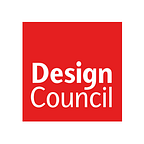Glastonbury’s mushroom pavilion: The future of festival design?
We spoke to Simon Carroll from Temple studio, who’s challenging the creative industry by creating a mycelium-grown pavilion that could be the future of sustainable festival stages.
Tell us about the pavilion and the inspiration behind the project.
The Silver Hayes pavilion at Glastonbury, was designed to provide a space to promote and demonstrate new technologies that have the potential to disrupt the use of unsustainable and polluting materials in the creative industries. We wanted to challenge the use of Polystyrenes (EPS) by constructing using mycelium materials.
The pavilion design drew from the interconnectivity of mycelium, the fungal route network, which provides connection to living organisms throughout the natural world. The overall shape of the structure looked to mimic nature through its Fibonacci-style progressing frames whilst the seating around the outside and the space within allowed people to stop, rest, connect and develop relationships and ideas.
How did you start with finding / deciding the materials for the project?
Since seeing a TED talk with Evocative’s founder Eben Bayer in 2016, it has been my goal to see if mycelium technology could begin to resolve the challenges we face in becoming sustainable and, more importantly, circular within the creative industry. Similar to the packaging industry, a lot of the work we do to create three-dimensional detail and embellishment is manufactured from polystyrene or polyurethane foams and once they have served their purpose, they are simply disposed of.
Developing my knowledge on the subject lead me to BIOHM, a UK based bio materials company and Grown, a European company licensed under Ecovatives technology.
In 2019, having developed relationships with both companies, I approached a long standing client, Team Love, on the idea of producing a piece to demonstrate the possibilities of mycelium materials at Glastonbury.
What were the project challenges?
Looking into completely changing what we build from meant we had to change how we build. At the core, the material needed to remain biodegradable and, in doing so, we could not contaminate it with poorly chosen additional materials such as glues, coatings and decorative finishes. We then had to look at approaches to working the material, trying and testing just about every piece of kit in the workshop to achieve close to the desired finish. As we moved forward from testing, we found limits to what we could achieve in structure and detail, and this very much informed our final design approach.
What are your goals/hopes as a result of the pavilion?
My goals through the pavilion platform are to continue to build a tool kit for the creative industry, testing and showcasing products in development that can better our working practices.
I hope this project will inspire others within the creative industry and beyond to explore positive disruptive choices in the products they design. But also realise these exciting new bio materials can exist outside the laboratories they are created in which, in turn, drive further investment in products and practices that are not just sustainable but circular by design.
What’s next for you and Temple?
Having come at this industry from the ground up, I’m currently starting a degree with the Open University in Design and Innovation. I’m really keen to develop my design practice and I know that furthering my education will only improve those opportunities. I’m really excited about the journey I can take Temple on now; my goal for so long has been to get us into a position where sustainable alternatives are tangible and can be taken seriously. My hope is we can now build on this and provide solutions to clients that consider not just the cost fiscally but environmentally.
Why is it important for the design sector to switch from using non-single use materials?
We only have one planet. Consumption is by design and therefore we have a responsibility to manage these finite resources in a manner that creates a better future for us all.
What advice would you give to designers looking to integrate more Design for Planet practices into their designs?
Challenge who you’re working with and who you’re working for. Ask for more time to consider the impact of a project and provide costs that aren’t just fiscal but environmental, considering what a project or product will do at the beginning and end of its life.
What does design mean to you?
An opportunity to create a circular economy that sees the regeneration of our planet and a better interaction with our environment.
If you want to hear more from Simon about the Glastonbury pavilion and also from BIOHM, join them at the Design for Planet Festival, 17–18 October.
The Silver Hayes pavilion was created in support by Arts Council England, Big Team CiC and Team Love — who now curate the Silver Hayes area at Glastonbury festival.
